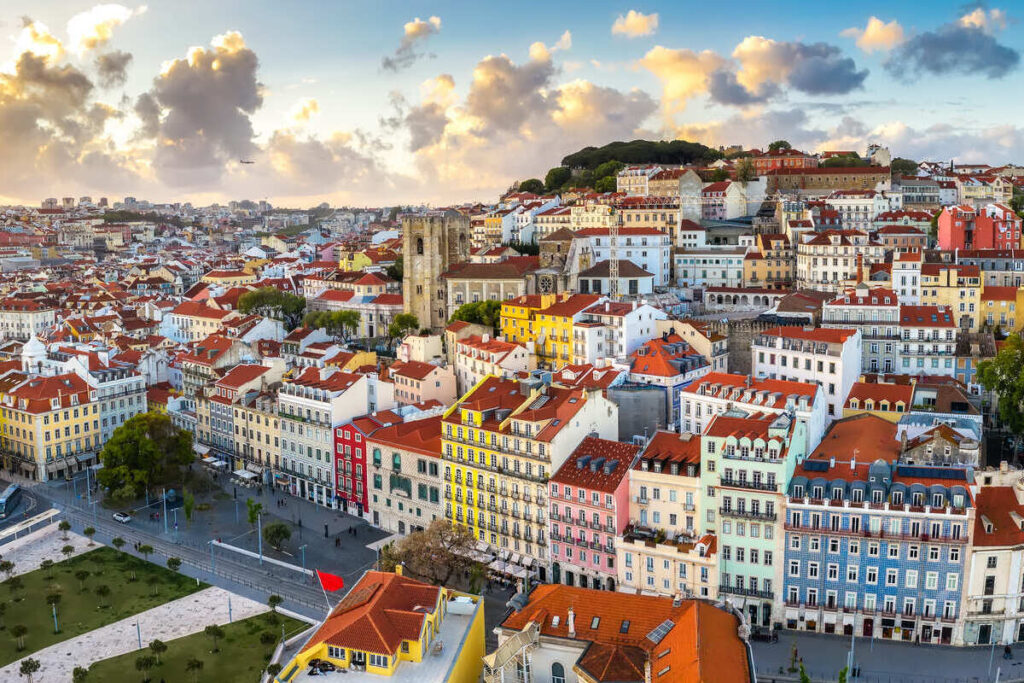[ad_1]
Last Updated
For Americans, Europe is more commonly associated with summertime, when it’s nice and pleasant out to go for a pistachio gelato by a pebbly beach, ride Vespas down a cliffside road in an Amalfi town, or island-hop around the Aegean.
Sounds heavenly, as long as the scorching July heat and the thought of an inevitable sunburn do not faze you, and you’re not too worried about spending hours on end in a queue to visit the Eiffel Tower: it’s all about that signature European joie de vivre, right?

What if we told you some classic summer destinations are, in fact, best enjoyed in colder weather, when crowding is so minimal during mornings you can have the whole city to yourself, and prices are not so exorbitant?
Here are 4 European gems you should visit in winter:
Paris, France
Though Paris is relatively busy year-round, in winter, it feels unusually quiet-er, as people are not keen on flocking into the narrow streets of the Latin Quarter when temperatures drop, and museums like the Louvre or Orsay are not overrun by school groups fulfilling their summer trip schedule.

Perhaps Europe’s number one tourist destination, the French capital is beautiful regardless of season, what with its well-planned cityscape, a multitude of flowery cafés, and wide boulevards, but there’s no denying it is far more pleasant to stroll when the summer hordes are gone.
There are places that just fit that somber wintery aesthetic: believe us when we say there is nothing less idyllic than sharing your ‘secret’ picnic spot in Luxembourg Gardens with thousands of other romancing couples or sitting on the steps of a jam-packed Montmartre in mid-July.

We would very much rather walk around the quartier in the crisp winter air while trees are barren and offer more than just short glimpses of the stately Haussman architecture the foliage normally hides, and the local brasserie is not overflowing with seasonal tourists, but chatty, high-spirited locals.
Rome, Italy
Yet another destination that often gets ruined by mass tourism is Rome. Unlike other Southern European spots, it is not your typical beach destination.

Yes, there is a beach in the wider metropolitan region, more specifically in the Ostian suburbs, but culture enthusiasts dreaming of marveling at the Sistine Chapel or retracing the steps of gladiators upon entering the Colosseum are not exactly going out of their way to sunbathe in an off-path, largely residential coastal zone of Rome.
With that being said, why go in summer anyway?
Rome is a sightseeing hotspot, and between late May and early September, it is a literal furnace, with temperatures that soar above 100 degrees and mile-long queues snaking around the block for all of your bucket list attractions.

Between December and March, some rain is expected, and even the occasional snowfall should temperatures drop dramatically, but the sun still shines for half the time, and in a worst-case scenario, should every single day be cloudy and cold, you can bet a freshly-cooked Pasta alla Gricia and a non-industrialized macchiato will keep you happy, cozy and warm.
Unless you fancy elbowing your way through a crowd for pictures of Trevi Fountain, we strongly suggest you reserve your go on a Roman holiday off-season, as you won’t be sweating profusely, the volume of tourism is lower, and consumer prices are not hiked in response to an overwhelming demand.
Seville, Spain
Third on the list, Seville is perhaps Spain’s third most-visited city after Madrid and Barcelona.

Famous for a colorful Plaza de España, a grouping of stately buildings arranged in a half-circle bounded by a manmade canal, the maze-like Triana neighborhood, lined by narrow, whitewashed houses, and a landmark medieval Cathedral, it truly makes for one of the country’s most iconic cityscapes.
The only downside is Seville is located in what’s Europe’s hottest region, where it’s virtually impossible to stay outside for longer than a couple of hours in the scalding Sevillano summer: you shouldn’t be surprised if the city thermometer exceeds 120°F even after sundown.
Needless to say, winters are pretty mild, with an average of 60.8°F and only six days of rain.

This means you may still eat alfresco and wear light jackets and even shorts sightseeing during the day; that is, if you don’t mind moderately chilly winds.
Similarly to Rome, you’re not going to Seville for a Mediterranean beach vacation: it’s inland, and there’s no beach after all.
Instead, you’re going there for the architecture, delectable ethnic cuisine, and the peaceful city parks, which, thanks to Andalusia’s year-round warm weather, can remain verdant even in the low season.
Lisbon, Portugal

Fourth and final entry: Lisbon is a hilly port city sitting on the banks of River Tagus, right where it empties into the Atlantic Ocean, and it’s grown to be a massively popular summer destination for Americans in recent years.
Something many who have been to Lisbon will agree, however, is that unless you have a certain physique, and you have well-trained lungs and can cope with an overpowering heat, you cannot tackle the seven hills the sprawling Portuguese capital is built on, nor set out to explore without pausing every now and then for an orange sumo break in a climatized café.
We will go ahead and say Lisbon, much like Paris, Rome, and its neighboring Seville over the Spanish border, should be visited over winter.

The reasons for that have been stated one way or another previously:
It is more of a sightseeing, cultural destination, a quality it shares with Rome, and though the Portuguese coast is a short half-hour drive away, the average tourist is not flying all the Lisbon for beaches, especially when North Atlantic waters are noticeably colder than the Mediterranean.
They are drawn to the medieval castle perched atop the colorful Alfama district, the ancient convents, and the marvelous food scene.

During a temperate Lisboense winter, nights may be cold due to the strong winds coming from the Atlantic, and you should expect more rain, but daylight hours are plentiful, and the average temperature is a very comfortable 57.74°C.
Plus, wandering the narrow cobbled alleys of Lisbon accompanied by their significant other amid the dense mid-winter fog, a bottle of Carcavelos wine in hand, to the tune of a fado ballad as played by a Portuguese busker is something we think everyone should experience at least once.
Read More:
Top 5 Travel Insurance Plans For 2023 Starting At $10 Per Week
How To Easily Earn Points For Free Travel
↓ Join Our Community ↓
The Travel Off Path Community FB group has all the latest reopening news, conversations, and Q&A’s happening daily!

SUBSCRIBE TO OUR LATEST POSTS
Enter your email address to subscribe to Travel Off Path’s latest breaking travel news, straight to your inbox.
This article originally appeared on TravelOffPath.com
Source link

